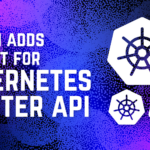
Introduction
In today’s containerized and microservices-driven world, Kubernetes reigns supreme as the orchestration platform of choice. However, its widespread adoption has opened a new frontier for cyberattacks. Malicious actors are increasingly
targeting Kubernetes clusters, seeking to exploit vulnerabilities and gain unauthorized access.
This blog post will explore the attack landscape for Kubernetes clusters and provide valuable insights for security teams on how to defend them.
Understanding the Attack Matrix
The MITRE att&ck framework provides a solid foundation for understanding attacker tactics, techniques, and procedures (TTPs). When it comes to Kubernetes-specific attacks, Microsoft has done an excellent job of mapping these TTPs to the Kubernetes environment. You can find their detailed analysis here:
- https://www.microsoft.com/en-us/security/blog/2022/12/07/mitigate-threats-with-the-new-threat-matrix-for-kubernetes/
- https://www.microsoft.com/en-us/security/blog/2022/12/07/mitigate-threats-with-the-new-threat-matrix-for-kubernetes/
Attack Scenario: Gaining Access and Escalating Privileges
This blog will delve into a scenario where an attacker gains access to a Kubernetes cluster with misconfigurations and a vulnerable application. Let’s dissect how the attacker exploits these weaknesses:
- Exploiting a Vulnerable Application: The attacker discovers a website within the cluster that lists all server files. This lack of input sanitization allows them to inject malicious code through the path, potentially leading to Remote Code Execution (RCE).
- Installing Tools and Establishing a Reverse Shell: The attacker utilizes the RCE vulnerability to install tools like curl and ngrok. Ngrok creates a secure tunnel, exposing the attacker’s local machine (port 8888) to the internet.
- Identifying the Kubernetes Environment: By examining the environment variables, the attacker confirms the presence of a Kubernetes cluster and potentially discovers a password stored there.
- Leveraging Mounted Secrets and Service Accounts: The attacker finds evidence of mounted folders like
/etc/gcpand/run/secrets/kubernetes.io/serviceaccount, suggesting mounted Kubernetes secrets. These secrets could contain sensitive information like credentials. - Abusing Service Accounts and Escalating Privileges: The attacker leverages the mounted service account to gain access to the Kubernetes API server. They then install
kubectland discover that this service account has full permissions for managing CronJobs, Pods, and Secrets within the cluster. This allows them to create a malicious CronJob with elevated privileges. - Maintaining Access and Provisioning Additional Resources: The attacker creates a CronJob that grants them a persistent reverse shell and full access to the container’s host system. Additionally, they exploit the compute engine scope on the node to potentially provision new virtual machines within the cloud environment.
Mitigating the Attack: Security Best Practices
This scenario highlights the importance of robust security practices for Kubernetes clusters. Here are some key strategies to consider:
- Secret Management: Never store cloud credentials publicly. Implement multi-factor authentication and utilize cloud secret stores for secure storage and access control.
- Image Security: Only allow images from trusted registries. Implement vulnerability scanners and enforce digital signatures for images.
- Network Security: Place your Kubernetes cluster behind a private network and restrict access via network policies.
- Application Security: Use SAST tools to identify potential application vulnerabilities.
- Authentication and Authorization: Configure and enforce RBAC (Role-Based Access Control) with the least privilege principle in mind.
- Runtime Security: Implement runtime security tools to detect and block malicious activity.
- Least Privilege Principle: Minimize the attack surface by removing unnecessary executables and functionalities within containers.
- Workload Identity: Utilize workload identity instead of storing cloud service account information directly in containers.
- Container Hardening: Avoid running unnecessary services like SSH daemons within containers.
- Admission Control: Implement admission controllers or policy management tools like Gatekeeper or Kyverno to enforce security policies.
- Storage Security: Avoid using HostPath volumes, or configure them in read-only mode. Utilize cloud object storage for application data.
- Resource Management: Set resource limits and requests for workloads to prevent Denial-of-Service (DoS) attacks.
- Logging and Monitoring: Collect Kubernetes and application logs for centralized storage and analysis.
- Backups and Recovery: Enable backups and snapshots for critical Persistent Volumes (PVs) for disaster recovery purposes.
Conclusion
By following these security best practices, organizations can significantly reduce the risk of successful attacks on their Kubernetes clusters. Remember, security is an ongoing process. Continuous monitoring, vulnerability management, and staying updated on the latest threats are crucial for maintaining a secure Kubernetes environment.
Reference to the Article- Medium
Follow us for more Updates














